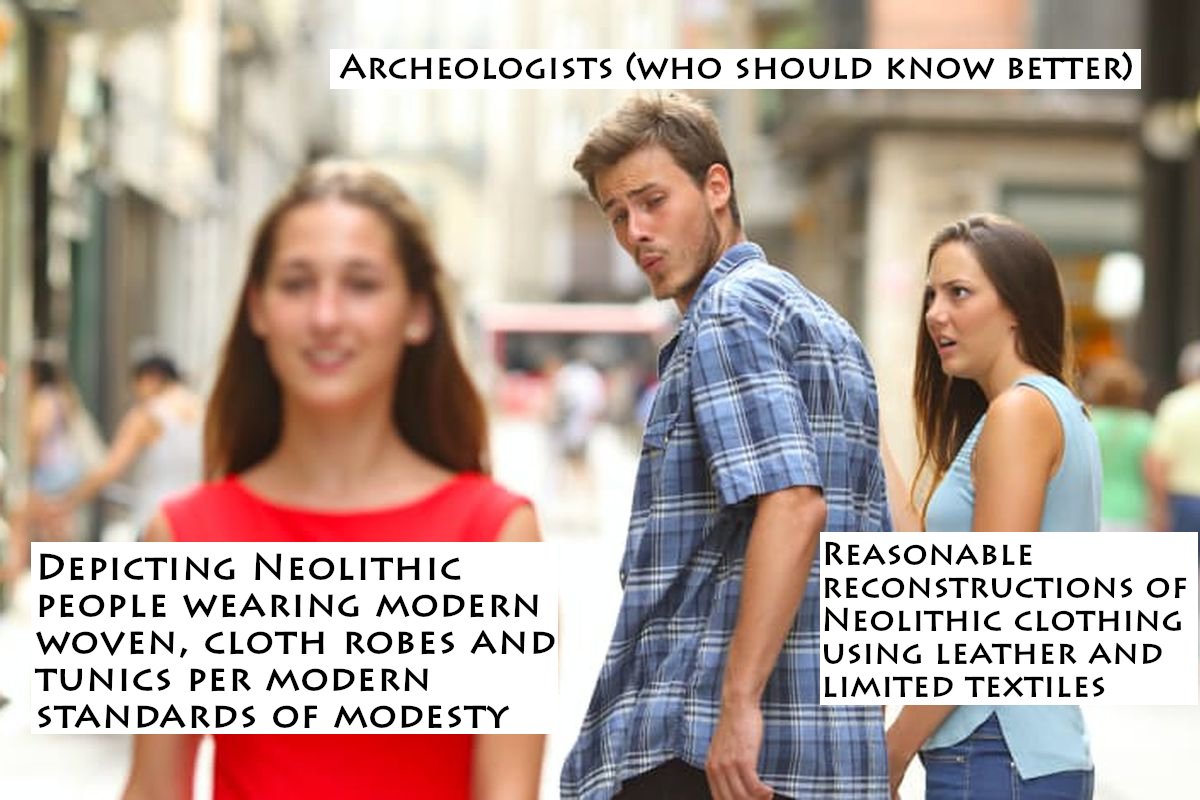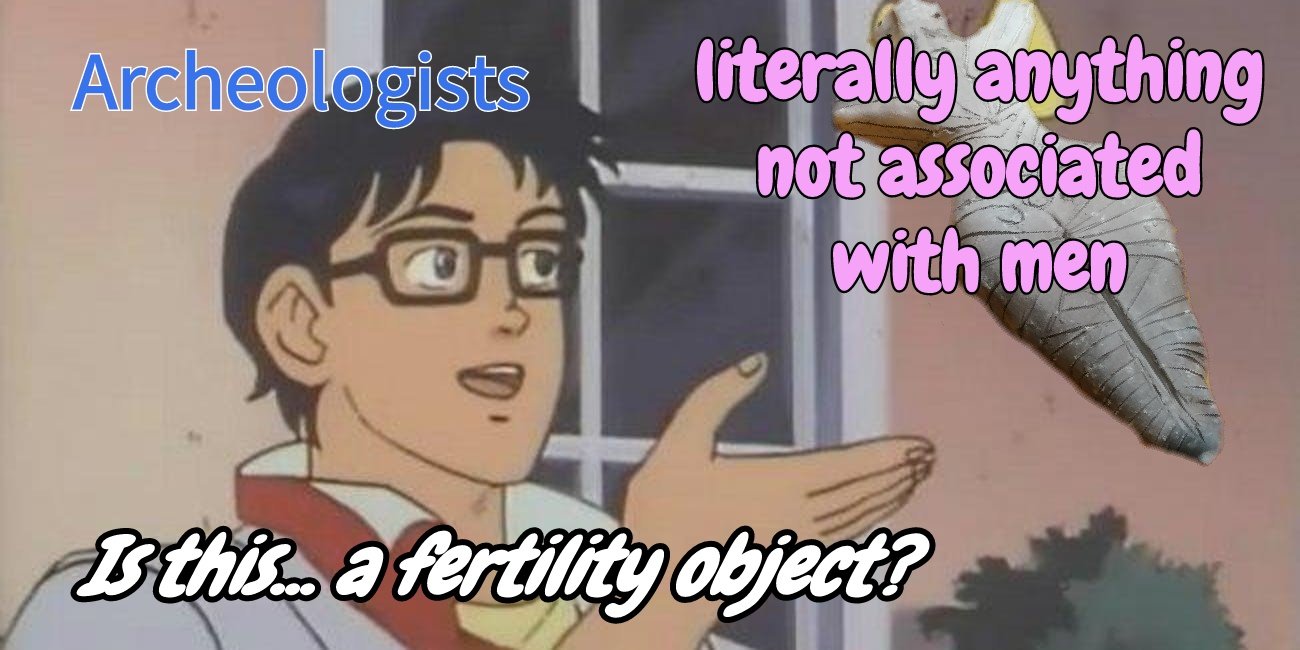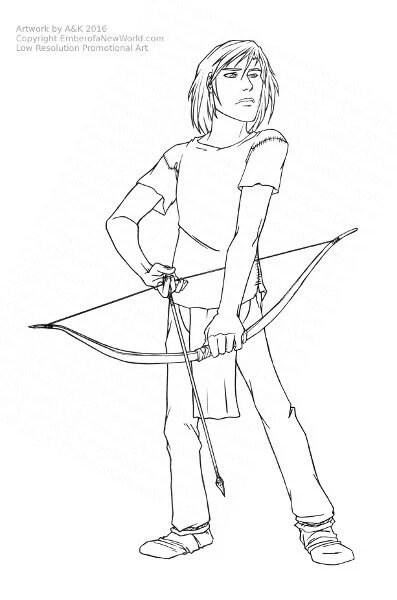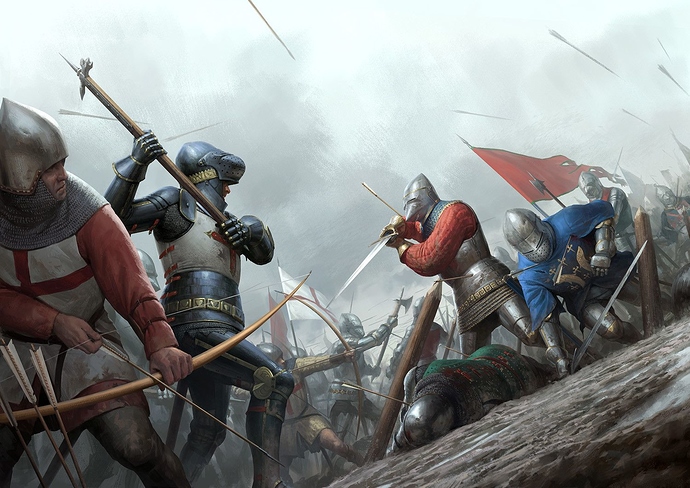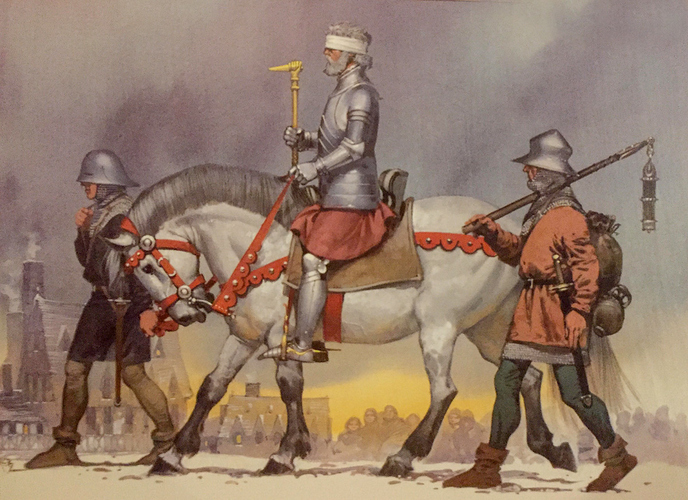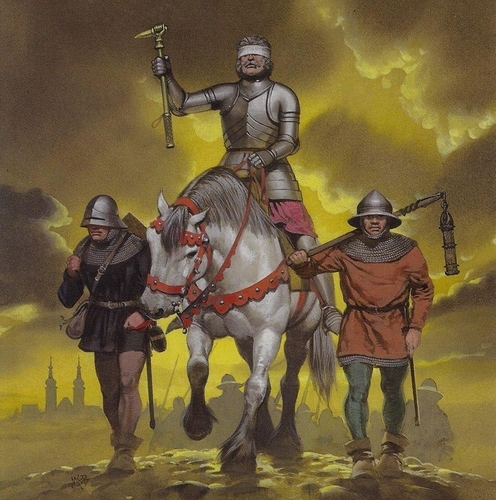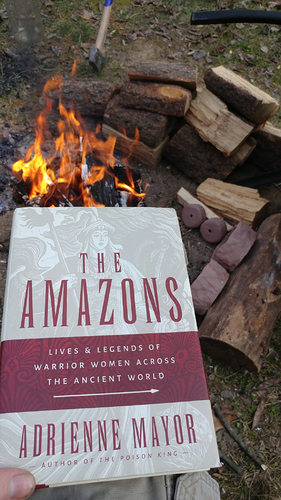Nvm…
In my opinion, I do hope that the developers decide based upon the knowledge and educated guesses of archaeologists (whichever way they go) and not on the speculations of forum members and not even make diplomatic compromises. If there are inconvenient truths regarding the life of the ancient people, then in my opinion, those truths should be modeled accurately or in accordance with the majority opinion of archaeologists. In my opinion, at least this game should be based in realism and not escapism like 99% of the games. If certain knowledge is too inconvenient for rating agencies and modern politics, then the second-best option I see is grouping gender-based roles into realism DLC along with human sacrifice, cannibalism etc. if applicable.
If the following short excerpt on hunter-gatherers from Wikipedia is correct, then in my opinion it should not be ignored for reasons of political correctness, diplomacy and hurt feelings:
Judging by the article on hunter-gatherers on Wikipedia, hunter gatherers were largely egalitarian, but settled hunter-gatherers were an exclusion. Despite being egalitarian, they still had some gender-based roles such as men concentrating on big game hunting and women on gathering and preparing food. However, there were a small minority of cases to the exclusion. Egalitarianism subsided with the agricultural revolution.
If this is wrong, then of course it should be ignored.
As said, these are just my opinions.
I find myself primarily in agreement.
Also, this is a good time to use my archaeologists memes which confront these topics lol
One thing to consider:
There is a difference between what most archaeologists will tell you and the consensus of archaeologists within a general specialty. For example, if you found 10 archaeologists from random archaeological pursuits, I suspect (my guess) that 8 would say Neolithic people wore woven fabric tunics most of the time. However, when actually reading the research for the leading experts in this field, e.g. E.J.W. Barber or Ian Gilligan, you soon learn that this is an old idea long displaced by evidence and in depth analysis.
This also is a problem with archaeologists claiming anything associated with women is always fertility related, another problem being challenged by scholars, such as A. Mayor and E. J.W. Barber (same as above).
This is something to keep in mind.
Consensus within a relevant specialty is what I had in mind. However, it would be a fallacy to say that because professionals disagree, layman should pick. If for example, three surgeons disagree on the process to use during surgery, the second best thing to do is to listen to the majority. Further muddying the waters with the opinions of electricians and postmen does not help at all.
However, judging by what I found online, there doesn’t seem to be a disagreement regarding gender-roles in particular. What I can find is that hunter-gatherers were more equal than modern people by gender of leaders and material possessions because it is not possible to accumulate wealth before being settled. But it’s still not 50-50. One source mentions a Gini coefficient of 0.25 (speculative) which is like Denmark in 2007. Other sources mention that despite more equal position, labour was divided (with exceptions) and that this might have been one of the contributing factors of Sapiens getting an upper hand over Neanderthals due to higher efficiency due to specialization which Neanderthals had less off. I can find articles of how settling destroyed egalitarianism. I can’t find contradictory sources. But I used the paragraph on social and economic structure of hunter-gatherers on Wikipedia and some googling for now.
If there is a similar agglomeration of sources that would shift this seeming consensus, I would like to see it.
I agree entirely, but of course I’m specifically speaking about the consensus within a specialty as opposed to the general consensus of those outside of the specialty. If 4 cardiologist told you you had a heart problem, but six medical doctors who are not cardiologists disagreed, I think it would be smarter to follow before cardiologists.
While I agree to a point about the egalitarianism, the neolithic y-chromosome bottleneck is something which must be reconciled.
Neolithic men nearly killed themselves off due to, what appears to be, intertribal warfare.
I’m not sure you I understand this. Are you saying that those specialized in the relevant field should be overruled by a larger number of those who are not specialized? I would disagree with that as science is not a democracy. However, that is just my opinion.
Whatever the case, there doesn’t seem to be a disagreement regarding this specific issue (gender-based roles in Neolithic) between groups of archeologists. I can’t find a source that claims that women hunted same game alongside men in equal numbers except in several cases (Philippines etc.).
I agree. If in game there is a shortage of men, then women should take over all roles. Even if there is an equal number of men and women in the city, both genders should be involved in all tasks, but with different percentages depending on the task. Only my opinion based on sources I found.
No, I said the exact opposite.
For example, if 10 random scientists were asked about a phenomenon and 3 scientists who actually study the exact form of phenomenon in question were also asked, I’d listen to the 3 who were specialized in the exact subject vs. the 10 who were not.
I brought this up as there are several aspects of archeology where an incorrect, old fashioned view is pervasive through the community whilst actual specialists of the exact sub field haveee reached a differingg consensus.
In this case I was speaking of the problems with an egalitarian perspective, given they chromosomal issues of the late neolithic. This is an area of ongoing research.
Oh ok that makes sense.
Judging by new research, mathematical models show that lack of Y-chromosome diversity might have nothing to do with fluctuations in male population size, but rather only with fluctuation in reproducing male population size due to an accumulation of wealth and power among a small group of socially elite males. Thus signaling the decline of egalitarianism after agricultural revolution.
Technical source (Nature Communications)
Reader friendly summary (Sciencealert)
However, regarding the game’s male to female gender-based labour distribution, if anything, Y-chromosome bottleneck doesn’t seem to support equal task distribution. If it has anything to do with it at all. Unless we believe that there really was 17:1 female to male ratio and women took over all tasks. This doesn’t seem to be the case given the latest research. Also it seems weird to me that there would not be far more female bones found by archeologists pertaining to certain time periods if that were the case. The appearance of male elites seems to fit well with subsequent developments from late Neolithic onwards.
I certainly argue for the ability of all genders to potentially take apart in all tasks, but as much as there is evidence supporting this as well as my own personal approval of such a system, one cannot deny that there is also evidence to the contrary, for example some of the things that you cited above. One must always follow the evidence regardless of whether or not it is appealing.
Can you please be more specific? I only found sources in favor of gender-based labour distribution in Neolithic (excluding a few cultures), but I only spent about half an hour googling. (1, 2, 3, 4)
Edit: Just to clarify, by gender-based labour I do not mean that specific gender is completely excluded from any activity. Just that percentages are shifted from the 50-50 mark. If you were suggesting this, then we agree anyway.
Quoting myself from above:
So agreed.
Edit: Misunderstood a point so deleted part of reply.
I don’t think that there are any credible studies which providing significant death of insight into gender roles in prehistory is the very active determining them is extremely difficult, if not almost impossible. I would have to look through my notes from when I did the research for my novels, but there are some indicators. One of the best, if not few, indicators are grave goods. For example, finding a weapon or a spinning whorl can give you some indication of what particular genders did, based upon their frequency and association pattern.
While this kind of analysis does give some indication, it is hardly conclusive. And of course it will never take into account unusual events. For example, a tribe where only men are warriors met at some point have a woman who for one reason or another becomes a warrior. The likelihood that we would know about such an event is exceedingly low. This is why I only normally look at general trends, is that’s about as close other resolutions I think we’re going to get.
Oh ok, I assumed, for some reason, that there existed a view among some, that gender work distribution among all tasks was 50-50 at some point in the Neolithic and not whether or not there were at least individuals of both genders present at all kinds of work. 50-50 is how I understand the word egalitarian.
The developer mentioned in this thread regarding how gender work distribution was planned. I’m a realism freak when it comes to gaming, so I was interested in the studies because I wanted to determine if the game will take a realistic approach regarding these and some other things.
There are some archaeologists with that view, but when I read their research I don’t see how they justify it. The problem is we don’t have that magnitude of resolution on daily Society. Sure, we can get an idea, but there will always be a limit to our resolution based on how long it’s been and how few material artifacts have been left. So when you hear stuff like that, it’s often speculation. That’s why I prefer the archaeological white papers were they have to back that up, and you’ll find the statements disappearing pretty quickly when they’re actually peer reviewed LOL
Another example of a female warrior found. This one was quite young. She may never have even seen battle, but it demonstrates a connection between women and combat in antiquity. The implication is that the normalized concept of war being effectively male-only, aside from outliers, simply doesn’t match the actual evidence. Warfare is evidently a male-oriented topic, but not at the complete exclusion of women.
Also: I am hoping to get a hold of better information on this fine. I’ll be contacting the St Petersburg Institute of Material History Culture and see if they can give me more information.
One question Lotus, as I know you’re knowledgeable on the period and the topic 
I’m wondering what this “axe” really is. It looks more like a tool to pierce, or to scrub, something like that, more than an axe. Could this be a tool instead of a weapon?
And if we think this way, could it be for instance that the bow would be a hunting weapon, that she could also have used to fight in case this would be needed?
I mean, if we look back at Neolithic, doesn’t it seem natural that women would use axes, bows and knives exactly like men, as those were daily tools?
This would mean the idea that women would prefer to run in their houses instead of defending their families and homes in case of an attack would be totally ridiculous, if we consider they used tools=weapons as well as men in daily life.
To be fair, bronze-iron age steppe is definitely not my area of knowledge, nor am I an archaeologist (I am a lay person who reads too much).
However, that “ax” looks a lot like weapons used throughout the iron age and later. It’s long with a very narrow pick. This is used to dig into heavier armor. Consider this (much later) 16th century French war hammer. (image is public domain from:https://www.metmuseum.org/art/collection/search/34089)
This was designed to allow a footman to penetrate a knight’s heavy armor by focusing a lot of energy into a single spot. The length allows for both a greater amount of velocity and reach (footman vs. mounted knight). In the reverse, a steppe woman could bright down a more heavily armored foe from horseback in close range with such a tool.
We don’t know if she was a warrior or not, but her ax really doesn’t make much sense to me beyond being a weapon (though it may be something else).
Nice warhammer. Its called a warhammer and not a warpick because the hammer side is the killing tool against heavy armoured knights.
You strike targetwith the hammer hard, it buckles the plate at point of contact potentially locking the armour if hit in the right place allowing the hammer to be turned and the pointed end used in a critical weakness like the visor or armpit.
This is why knights fought with the visor up, more vulnerable to a frontal attack but a lot safer from the side which is where the knight is vulnerable. If a knight had a down visor the first hammer blow would crumple the visor against the helmet impairing vision of the target or even applying a headlock, which is a death sentence if the knight does not withdraw. Then the attacker could use the hammer to impact the armour, hammering it into an arm lock, or just going for the kill with a dagger straight away.
Now against thin plate that footmen wore the pick point could be used directly. This is because just about everyone who wore armour wore plate in the late medieval period, often only on the body and head with leather armoured limbs. This looks weird as if there was a half armouring going on. actually those footmen with mismatched armour levels often had a very thin cuirass designed to deflect blows only.
Plate varied greatly in terms of thickness, and this was to the advantage of a properly armoured knight as someone else could look comparably armoured and yet was not. Knight’s armour was bullet tested to take a double powder shot from a pistol directly to the cuirass front. It could survive a pick head from a warhammer.
Warhammers were dangerous but you had to know how to use one. They are not win buttons against plate. The ‘Hussite hammer’ was a mounted weapon to be used as described against mounted targets, as it still requires some attention to placement, foot vs foot mounted vs mounted in static blow to blow combat. You would not want to use a warhammer as a weapon of choice for riding down a dismounted opponent. Other than the lance the weapon of choice for a mounted knight was the mace as it provides the impact attack versus armour you need, will provide crushing injuries against light armoured targets and is simple to use.
A mounted knight hitting people on foot doesnt want to rely on skill of hit placement, he basically cant unless extremely skilled. and has lighting fast reactions, and that again depends on what the target does. A moving mounted melee attacker cant use timing to his advantage the timing of his blow is up to the movement of the horse. You must strike as you pass not wait until you see an opening. So naturally you want a weapon that doesn’t care much of the opponent is actively parrying. So that means a lance for a one hit fast kill then afterwards the mace, or possibly axe. A mace may shatter a shield parried but not get stuck in said shield, it will cause the impact of rider and horse to hit home crudely for whatever effect it has where chance has you hit. When the horse is stopped it is a good weapon for a flurry of blows and the metal haft can be used to parry as needed.
The warhammer is used the same way flat head forwards, wheras the mace need no thought to orientation. Yes with proper skill to keep the tool fair aligned with the blow a warhammer would be better, but I would not want to risk the point lest the point strike to deep and rider lose control of his weapon.
To brandish a hammer in mounted combat is to signal ‘yes I am that good’. Jann Zizka, who the mounted hammer is most closely related to also used the mace, and it was his preferred weapon.
Note how modest a mace is, don’t underestimate it, its a real damage dealer. This is Jan Zizka in fighting pose with one eye left. Interesting that his statue in Prague is depicted with the mace not hammer.
Fairly accurate image of a footmans warhammer, note hammer side is used for general combat.
Jan Zizka with warhammer lead towards battle as an icon.
Note he wont be getting much fighting done. Still a badass.
I have not read the whole thread but in my opinion this whole debate on the role of women in prehistoric societies could be simplified a lot by limiting itself exclusively to judging the past by the data we have about it and the logical conclusions that can be drawn about them.
For example, the legend (or not so legend) of the Amazons or the warrior women was something that drew the attention of the ancient Greeks of the 1st Millennium BC. because women engaged in war seemed unusual to them, however I don’t think it was a myth for them because they recorded the invasion of Attica by the Amazons in 1251 BC. in the Chronicle of Paros (epigraphic inscription with a chronological record of kings and notable events in Athens between 1600-264 BC).
In my modest opinion (i´m not historian), this “legend” of the Amazons is an indication that in the II Millennium BC there were still societies in Eurasia that conserved a pre-Neolithic model where the role of women was more egalitarian or even dominant but that disappeared with the agriculture and sedentarization that led first to population growth and then to the struggle for resources and the militarization of societies, this is where the role of women began to be the “traditional” one for obvious reasons: an activity such as war and violence was logical to be carried out by the physically strongest (men).
Only my two cents 
If you are interested in the topic of women warriors (who have existed throughout human history), may I recommend The Amazons: Lives and Legends of Warrior Women Across the Ancient World, by Adrienne Mayor.
It’s very approachable and has a lovely bibliography you can cross reference.
Thank you 

